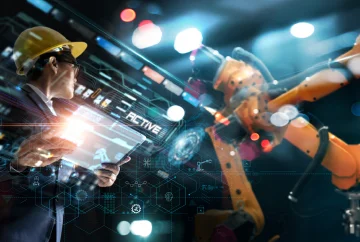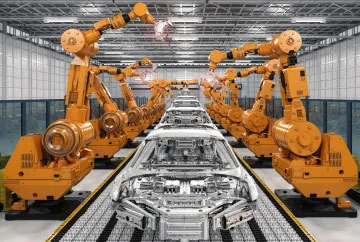As the perils of climate change grow increasingly evident, it becomes essential to assess the environmental consequences of manufacturing high-tech electronic appliances on a rapid scale. According to a UN report, the electronic waste generated globally is projected to reach 74 million metric tonnes by 2030. The carbon footprint of electronics is also estimated to account for 14% of total greenhouse gas emissions by 2040. These issues are a close result of exorbitant consumption rates, but a large fraction of the environmental impact can also be mitigated by upgrading the existing production schemes. Value chains must be overhauled to integrate sustainable outcomes that would ensure efficient production cycles while limiting environmental damage.
Combating Obsolescence
Sustainable designs can ensure longevity by providing durable products with more comprehensive usage flexibility over longer durations. A key factor in extending life cycles is expanding the scope of repair for personal and domestic appliances. Disassembly should be keyed into the design philosophy to ensure user-friendly avenues for repairing, repurposing, and remanufacturing devices across their lifetime. Disassembly-based models can also provide flexibility in usage so that products remain relevant and valuable for longer. Configuring repair configurations into the mechanical design process can further lead to the development of increasingly efficient assembly procedures.
Improving designs for energy efficiency can also ensure longevity. Since the heat generated in electronic casings often results in early malfunctioning, designing equipment for better thermal efficiency can significantly enhance life expectancy and system reliability. Improved cooling technologies and additional miniaturization are critical for achieving this.
Partial-update mechanisms, where only sections of a product are refurbished for periodic updates instead of rendering the entire device obsolete, can also extend the useful lives of individual device models and prevent them from entering the waste stream prematurely. Moreover, manufacturing products where the partial failure of a single feature does not void the device's entire utility can also lead to more sustainable outcomes.
Design From Waste
In addition to precious metals like gold and silver, high-technology goods comprise critical raw materials like cobalt and gallium, which have an increased risk of supply shortage. To reduce dependence on mining and ensure the recovery of these metals, the bulk of e-waste should be utilized as a source of secondary raw materials. However, studies show that a meager 17.4% of global e-waste is formally collected and recycled.
In addition to the slow adoption of recycling philosophies across sectors, high-technology devices pose some specific challenges. For instance, the recovery of elements like germanium and indium is difficult owing to the dispersed nature of these metals in existing products. As such, the design and assembly procedures should be remodeled to integrate recyclability and ensure the ease of recovering raw materials towards a product's end-of-life.
Using hazardous materials in product designs also creates significant challenges for recycling. Apart from the high cost of sequestering harmful chemicals like brominated flame retardants, there is also the need to recycle and treat these elements in an environmentally sound manner that would not cause any subsequent contamination.
Material selection is crucial for minimizing the volume of waste generated and ensuring that whatever is produced can easily be repurposed. In addition to reducing material diversity to facilitate ease of separation, design processes should favor 'greener' raw materials like aluminum, graphene, and biomaterials, which can be recycled repeatedly and pose minimal environmental risks.
Towards a Circular Economy
Overall, value chains must switch from linear processes to ones that are close-looped and circular. A reverse supply chain should be established where the e-waste is cycled back to the design phase to be repurposed into newer products. However, 80% of a product's environmental impact is determined in the design stage, so longevity and recyclability must be integrated during production.
Comprehensive Life Cycle Assessments (LCA) can help explicate the potential environmental consequences of a product across its entire lifetime: from the sourcing of raw materials followed by the manufacturing of components to the logistics involved in packaging, transportation, consumption, and the final disposal of the end product. Existing LCA methodologies can be optimized using machine learning to improve predictive models. ML can be implemented as a real-time algorithm to assess changes in production and suggest potential environment-friendly alternatives proactively.
While industrial scale-ups for sustainable designs are essential, educating consumers on the negative impacts of e-waste and encouraging 'bring-back' policies for discarded appliances is also necessary. Alternative consumption modes like subscription and renting must also be explored. At the end of the day, the market demand for sustainable products also requires a re-examination of overall consumer trends.
Connect with Birlasoft experts to accelerate your sustainability transition and explore the opportunity in sustainability.
Recommended
Manufacturing | 9 Min Read



